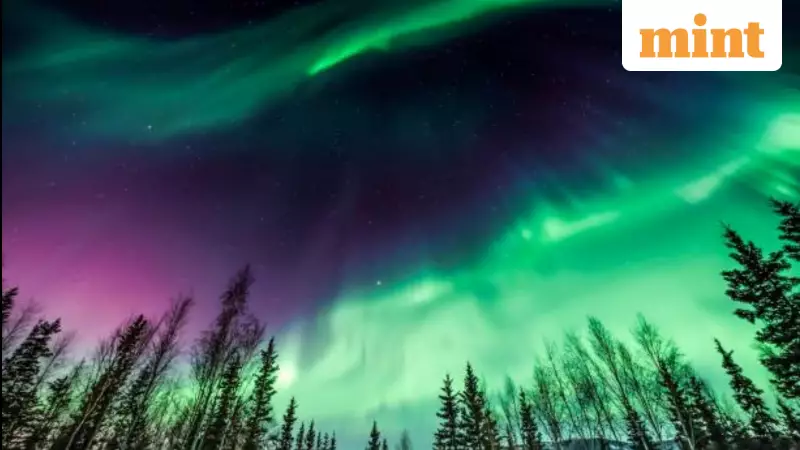
Residents across more than twenty American states are preparing for a breathtaking celestial spectacle as the Northern Lights are predicted to illuminate skies tonight, November 11-12. This extraordinary display promises to paint the heavens with vibrant colors rarely seen at such southern latitudes.
Solar Activity Fuels Spectacular Display
The magnificent light show results from intense solar activity interacting with Earth's atmosphere. According to the National Oceanic and Atmospheric Administration (NOAA), two coronal mass ejections (CMEs) are expected to strike our planet late Monday, potentially triggering strong (G3) geomagnetic storm conditions.
Adding to the celestial fireworks, a third and even more powerful CME is forecast to follow. This massive burst of solar energy originated from an X5.1-class solar flare – the most powerful recorded throughout 2025. Scientists predict this third wave will reach Earth around 7 a.m. EST (12:00 GMT) on November 12.
Which States Can Witness the Aurora Borealis?
NOAA's latest aurora forecast map indicates the Northern Lights could be visible across at least 21 US states, offering an unprecedented viewing opportunity for millions. The fortunate states include:
Alaska, North Dakota, Minnesota, Montana, Wisconsin, Michigan, Maine, South Dakota, Idaho, Vermont, Washington, New Hampshire, Wyoming, New York, Iowa, Massachusetts, Pennsylvania, Nebraska, Ohio, Illinois, and Indiana.
This extensive coverage means residents throughout the Midwest and Northeast regions might enjoy this stunning natural phenomenon if weather conditions remain favorable. Unlike last week when cloudy skies obstructed views, meteorologists anticipate clearer skies for tonight's event.
Optimal Viewing Times and Expert Tips
NOAA's three-day geomagnetic storm forecast suggests heightened aurora activity will persist through the night. The prime viewing windows are:
4 p.m. – 10 p.m. EST (2100–0300 GMT): Minor to moderate storm levels possible
10 p.m. – 1 a.m. EST (0300–0600 GMT): Strong geomagnetic storm levels likely
During these peak hours, skywatchers might observe the Northern Lights as glowing ribbons, shimmering arcs, or soft clouds of color drifting across the northern horizon.
Maximize Your Aurora Viewing Experience
Space weather experts recommend several techniques to enhance your chances of witnessing or photographing the aurora:
Seek darkness facing north: Escape city light pollution and focus on the northern horizon for optimal visibility.
Leverage your smartphone camera: Modern phone sensors can detect faint auroras invisible to naked eyes. Scan the sky through your camera to locate the phenomenon.
Allow eye adjustment: Spend at least thirty minutes in darkness to develop proper night vision.
Dress appropriately: Nighttime temperatures drop rapidly, so wear warm clothing for extended outdoor viewing.
Practice patience: Auroras can appear suddenly and unpredictably, so remaining outdoors longer significantly improves viewing chances.
For real-time updates, consider downloading specialized Northern Lights forecast applications like My Aurora Forecast & Alerts or Space Weather Live, available on both iOS and Android platforms. These apps provide location-based alerts when aurora visibility peaks in your area, ensuring you never miss nature's most dazzling light show.





